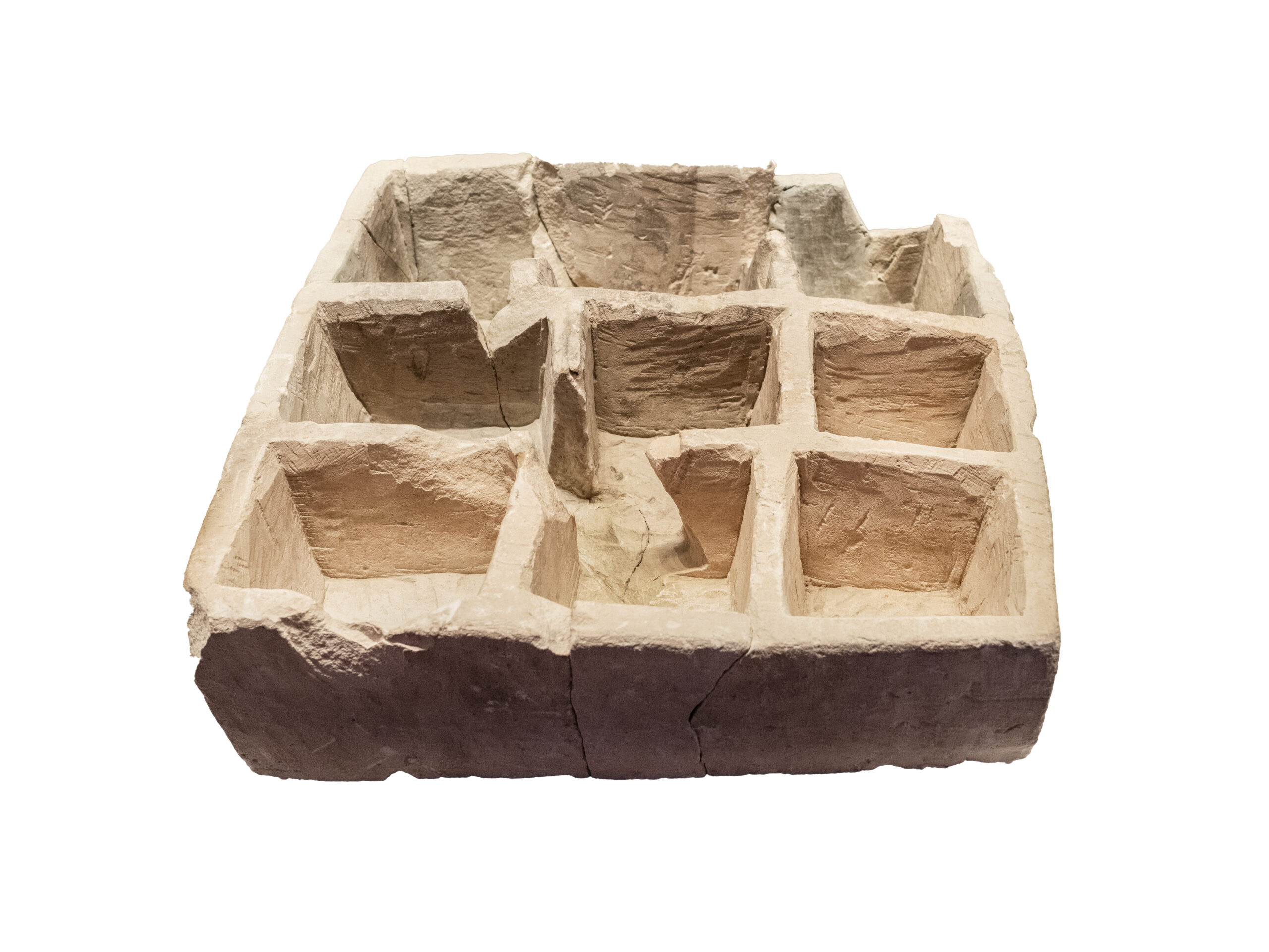The box, used for commercial activity, was burnt – evidence of the destruction of Jerusalem about 2,000 years ago
The Israel Antiquities Authority (IAA) announced on Wednesday that a rare compartmented limestone container dating back to the days of the Second Temple is being presented to the public for the first time at the Israel Museum, Jerusalem. The unusual box was discovered during excavations conducted by the IAA in the City of David that is part of the Jerusalem Walls National Park, and is funded by the City of David Foundation in collaboration with the Ministry of Heritage.
The square box measuring 30 x 30 cm, was carved from soft limestone and the inner section was divided into nine equal sized compartments. The multi-compartment container was discovered in a destruction layer inside an ancient store dated to the end of the Second Temple period that once stood alongside the Pilgrimage Road in the City of David. The sides of the box are blacked, indicating that is was burnt perhaps during events of the Great Jewish Revolt, which ultimately led to the destruction of Jerusalem.
Researchers assume that the box was used for commercial purposes such as displaying premeasured goods. According to Dr. Yuval Baruch and Ari Levy, excavation directors on behalf of the IAA,the box was evidence of “flourishing commercial activity in Jerusalem 2,000 years ago.

“During the excavations of the Pilgrimage Road, where the box was discovered, many objects have been found testament to the flourishing commercial activity that took place alongside the road during the Second Temple period. During the excavations we have uncovered ceramic and glass vessels, production and cooking facilities, various measuring tools, stone weights and coins. Together, these objects suggest that the road was connected to commercial activities such as a lively urban market. The Pilgrimage Road connecting the Pool of Siloam to the Temple Mount was the main thoroughfare of the city 2,000 years ago. It seems that the newly discovered box was related to this commercial activity that took place along the Pilgrimage Road.”
The economic and commercial systems of Second Temple Jerusalem were similar to other large cities in the Roman world and boasted large markets featuring local and imported goods, some even exotic. As a temple city and pilgrim center, ancient Jerusalem’s markets must have had specialized items, uncommonly found in other areas.
Daily life and trade in Second Temple Jerusalem must have been conducted with strict adherence to Jewish purity laws. Evidence of this can be seen by a number of distinct archaeological finds such as thousands of limestone vessel fragments discovered in excavations throughout the ancient city and its surroundings. The widespread use of stone vessels can be explained by Jewish law (halacha), which designates that stone, unlike clay or metal, cannot become impure. Therefore, it is possible that stone vessels were re-used over and over for long periods of time. “It seems that the multi-compartment stone box from the City of David was related to the unique Jerusalem economy conducted in the shadow of the temple, maintaining strict observance and in accordance with purity laws. Therefore, we can consider this box a distinctly Jerusalem find.” Levy and Dr. Baruch say.

Pieces of another similar box were discovered about 50 years ago by the archaeologist Nachman Avigad during excavations in the Jewish Quarter. Upon discovery, Avigad humorously called the object a “nuts and seeds bowl”, a name which has stuck since. Interestingly, all similar boxes have been discovered in Jerusalem, mostly in the City of David however, the newly discovered box is the only complete example. At this stage of research, archaeologists still wonder what exactly it was used for.
According to Dudi Mevorah, senior curator of the Archaeology Department at the Israel Museum, Jerusalem “The box was found broken into pieces with parts missing. The fragments were brought to Victor Uziel, conservationist from the Israel Museum Artifact Conservation Laboratory which specializes in treatment and restoration of artifacts directly from the field. We placed the stone box on permanent display together with spectacular colorful frescos, chandeliers and magnificent pottery, stone and metal vessels from Jerusalem’s luxury houses dating to the end of the Second Temple period – you are invited to come and see them.”
To download pictures, click here
1-2 The box discovered during the Israel Antiquities Authority excavations in the City of David. Photograph: Zohar Shemesh, Israel Museum, Jerusalem
3-4 The box on display at the Israel Museum archaeology gallery. Photograph Zohar Shemesh, Israel Museum, Jerusalem
5-7 The Pilgrimage Road excavations in the city of David. Photography: Emil Eladjem, Israel Antiquities Authority
8. Archaeologists Ari Levy and Rikki Zalut Har-Tuv of the Israel Antiquities Authority at the Pilgrimage Road. Photo by Emil Aladjem, Israel Antiquities Authority



